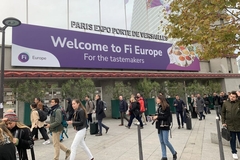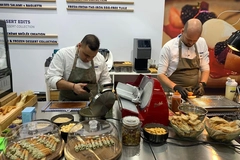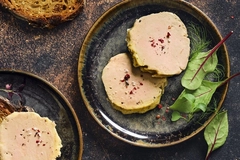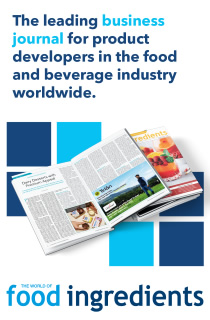Cultivated meat merger: Gourmey-Vital Meat acquisition creates an advanced cross-species platform
Key takeaways
- Gourmey acquires Vital Meat to form Parima, combining expertise in cultivated duck and chicken to build a scalable, cross-species food tech platform.
- Parima aims for regulatory firsts, with nine filings in progress and a strategic focus on approval for both duck and chicken in global markets.
- Industrial scale and low costs achieved, with verified production costs under €7/kg (US$8.19/kg).
France-based cultivated food company Gourmey has acquired Vital Meat to form Parima, which brings together two European food innovators to develop scalable systems to produce high-quality animal products directly from cells.
Joining forces enables the companies to reach the critical mass needed to serve global, multi-channel markets, from premium foodservice to large-scale B2B ingredients.
The deal will see Parima begin with cultivated duck and chicken. It brings together Gourmey’s full-stack industrial platform, which includes premium cultivated duck products validated by Michelin-starred chefs.
This combination establishes a “robust foundation to scale across species and market,” and positions Parima at the forefront of the cultivated meat industry’s next phase.
Consolidation in cultivated meat
The acquisition comes as the cultivated protein sector sharpens focus on consolidation and industrial scale-up.
Gourmey will operate as its culinary and innovation arm, focused on premium segments, established distribution channels, and collaborations with leading chefs and fine food distributors.
Nicolas Morin-Forest, CEO of Parima, says the cultivated protein sector has reached an inflection point. It’s no longer about proving the science but proving the scale.
“We now have validated economics, demonstrated commercial traction, and the confidence that our technology can reach commodity-level pricing. That makes this the right moment to consolidate strengths and accelerate industrial deployment,” he tells Food Ingredients First.
“By bringing together two complementary pioneers, we’re establishing the scale-readiness required to serve global markets and reinforcing Europe’s leadership in the next generation of sustainable animal production,”
“We chose duck and chicken because they represent two complementary strategic plays. Duck, developed under the Gourmey brand, is a high-margin product where we’ve already demonstrated our ability to deliver on culinary excellence, scalability, and unit economics, with validation from Michelin-starred chefs and global distributors. Chicken, through Vital Meat’s proven cell lines and know-how, opens the door to broader, higher-volume markets.”
 The cultivated protein sector is no longer about proving the science but the scale, says Parima CEO Morin-Forest (Image credit: Cyril Marcilhacy).
The cultivated protein sector is no longer about proving the science but the scale, says Parima CEO Morin-Forest (Image credit: Cyril Marcilhacy).
Expansion roadmap
Parima holds one of the most advanced intellectual property portfolios in the cultivated food sector, with over 15 patent families and more than 70 patent applications.
Gourmey is seen as a trailblazer among cultivated meat companies. It was the first company to seek approval for cultivated products under the European Commission's novel food framework.
Parima is on course to become the first company worldwide positioned for the approval of two animal species in the cultivated food sector, duck and chicken, unlocking an unlimited range of product applications. It has nine regulatory filings progressing across key global regions.
“Our expansion roadmap is guided by two clear criteria: addressing unmet market gaps and driving cost efficiency. With our pluripotent cell platform and low-cost inputs, we can scale efficiently across species while maintaining strong unit economics. Our goal is to become the first company approved for two animal species, unlocking a wide range of products, from premium to commodity,” Morin-Forest continues.
Keeping costs down
Gourmey achieved independently verified production costs below €7/kg (US$8.19/kg).
“Achieving verified production costs below €7/kg (US$8.19/kg) was made possible by a complete shift in the cultivated meat technology paradigm. Our system combines three breakthroughs: high-density and stable pluripotent cell lines, full suspension culture, and growth factor–free, food-safe feed. Together, these elements unlock industrial-level efficiency,” says Morin-Forest.
“Within Parima, these efficiencies scale further by integrating Vital Meat’s 2,000-liter infrastructure and applying advanced machine learning to optimize every stage of our cultivation process across multiple species.”
Navigating regulatory frameworks
Morin-Forest says there’s no single global playbook for cultivated meat regulation; every region requires its own approach. The key is proactive, transparent dialogue and building a clear, science-backed safety narrative.
“Our team focuses on anticipating regulators’ questions, providing robust data, and engaging early in the process. While frameworks differ, for instance, the EU’s Novel Food process versus the FDA–USDA pathway in the US, our experience across nine filings helps us navigate these differences efficiently and set a benchmark for regulatory readiness in cultivated foods.”
“A resilient food system ten years from now will be defined by diversification, sustainability, and strategic autonomy. It will balance multiple sources of protein to strengthen food security and minimize environmental impact.”
Morin-Forests stresses that cultivated meat will not replace traditional farming but will complement it, adding a scalable, low-carbon, and local source of high-quality protein.
“By producing food through biomanufacturing, we can reduce reliance on imports, safeguard competitiveness, and build supply chains that are both sustainable and sovereign. Cultivated proteins will play a key role in this transition, using renewable energy and minimal land or water to create a more resilient, future-proof food system.”



















